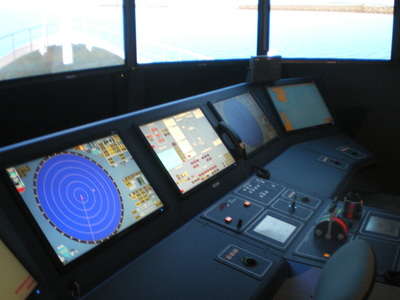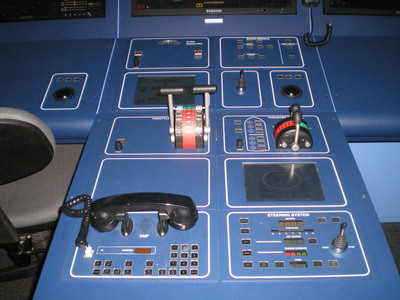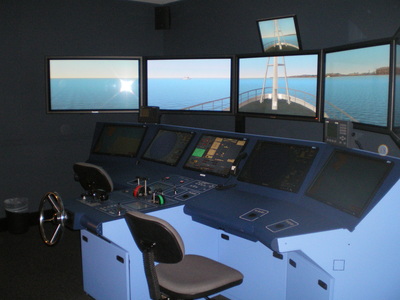AMC
Since I’ve nearly finished the Master 5 course, it’s probably about time I put up a few words about the AMC. Even though the course is technically run by UTAS, it’s such a different environment to my undergrad at ANU.
The course covers so many different topics, and they’re mostly orthogonal to each other but all of them are important. We’ve done fire-fighting, first aid, survival at sea, radio, ropework, navigation, rules of the road (so to speak), cargo lashing, lifting gear, refuelling, pollution prevention, work at heights, towing, tide calculations, legislation, light-range calculations, simulator training and damage control. Damage. Control. The highlight of the course.
Since once you’re out at sea you’ve got pretty much nobody but yourselves to count on, if things go bad and you start taking on water you’d better be able to do something about it. This isn’t the sort of thing that you can teach in a classroom, and they don’t. We’re taken over to the Stephen Brown, given hard hats and steel-capped gumboots and taken through the process of shoring up hatches at deck level and in the bulkheads. The instructors pick out someone to be the captain and give us a couple of minutes to organise while they prepare things on their end. Then they call out “FLOOD! FLOOD! FLOOD!” and all hell breaks loose.
They start you off small - water’s pouring out of three different places in the same compartment. Everyone’s calling for measuring batons, shoring timbers, pads, rubber mats, wedges and mallets. The runner’s bringing supplies, but everything’s going to the wrong projects. There are eight people and nobody can find any of the six mallets. Someone remembers that we have pumps and asks for them to be turned on. The water level starts to fall. The water level starts to rise again - what? The debris floting around has been sucked into the inlet. Call to shut the pump off, pick up the mess, call to start the pumps.
Because those things are starting to come under control, the instructors start some water in the other compartments. Nobody notices for a couple of minutes, by which point it’s made quite a mess. Start those pumps, too, and hammer plugs into the holes. Did I mention it was fairly dark during all of this? With “bare wire” and salt water everywhere, cutting power is the obvious first step. Everyone’s still shouting.
Eventually, they stop the exercise and we all clean up while the pumps empty out the compartments. They take us to the debriefing room soaked from head to toe with gumboots completely full. It turns out that the debriefing room is a sauna. A proper sauna with hot rocks and wood panelling. We talk about it for a while, they select a new captain and mate and we repeat the exercise. The second try goes better.
And then there’s simulator training. At the Newnham campus, they have the ship simulators. They look like this, and they put ARTEMIS to shame:



There are EIGHT of these, all linked and all identical, plus another couple of simulators we never got to use. They’ve run exercises for us in the Torres Strait, in Sydney Harbour and at the entrance to Port Phillip Bay. The gamer in me had a little chuckle at the texture quality but once they start the exercise it really doesn’t matter. The landmarks are all laid out very accurately, and if they turn up the sea state the ships move like they should. They can set up arbitrary weather and currents, and they love turning up the pressure by introducing heavy traffic. Then while you’re trying to not hit anyone, they’ll ask you to plot position fixes on your charts every six minutes (sounds easy, right?). Most of the computer-controlled ships don’t have any intelligence - they stick to preset routes and will happily run you over if you don’t get out of their way, never mind the COLREGS (see also: Rules 2 and 17). The instructors also have ships they can directly control, which don’t obey the laws of physics. THEIR ships can steam straight through land, teleport, and generally set up risk of collision so you have to take action. Frustrating, but very useful.
Another really neat thing they teach us is all these graphical computations (in the graph-paper sense). You can work out current’s effect on your ship by drawing the right vectors on your chart. If you see another vessel on radar you can work out their closest point of approach and their true course and speed graphically. Finding the height of the tide between low and high water is basically interpolation using a cosine curve instead of a straight line, and that is also done by ruling lines on a graphical tool. You never want to spend hours calculating a precise answer because it’ll be out of date. The graphical tools give you good enough and quick enough answers for decision making.
It’s amazing just how many different skills you need before they’ll let you take command of a vessel (and that’s not counting the seatime requirements). Even the restricted ticket is the exact same course (with greatly reduced sea-service requirements). The one ticket lets you work on a pretty broad class of vessels (up to 80 metres, if you’re a mate within 200 miles of the coast), doing a pretty big range of stuff (from pottering around on a local ferry to mate on a fishing vessel 600 miles from the coast). The course has to reflect that.